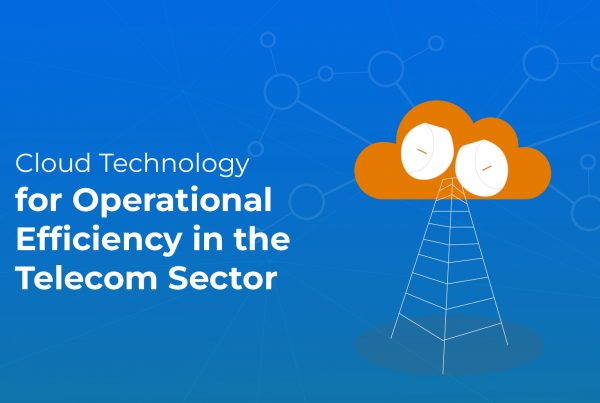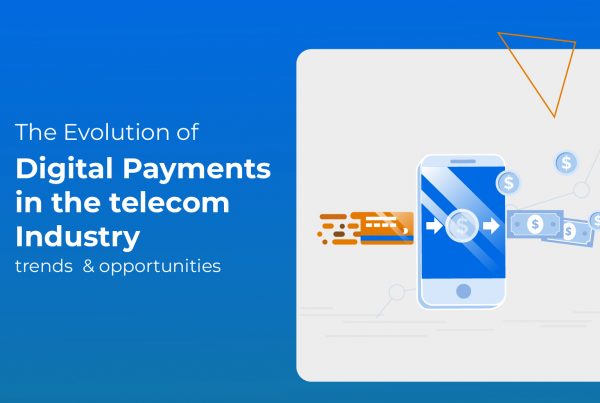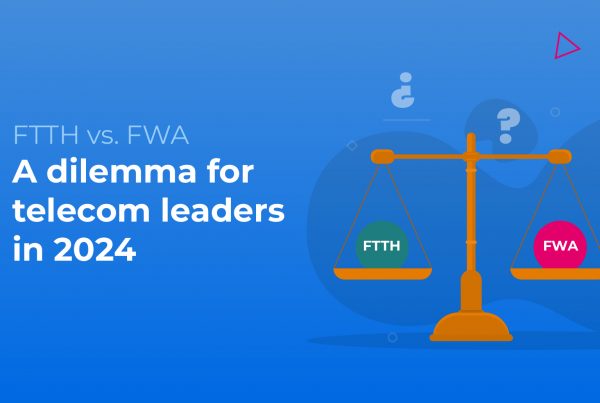The telecom industry stands on the brink of a monumental shift propelled by the ubiquitous growth of the IoT as the global IoT telecom market is poised for exponential growth, with a projected CAGR of 31.8% from 2018 to 2028. This not only underscores the immense potential within the telecom sector but also marks a new era of digital transformation and connectivity. From optimizing operational efficiency to enhancing customer experiences, the potential applications of IoT in telecom are virtually endless. This transformative technology is reshaping the landscape of connectivity, ushering in a new era of innovation, efficiency, and opportunity for telecom operators worldwide.
The Telecom Revenue-Growth Newsletter
Our coveted monthly newsletter compiles vetted insights on creating effective sales and distribution chains that fulfil telcos' revenue goals. That, and a lot more.
Here’s a list of what will be covered in this blog:
Impact of IoT on Telecom Industry
By seamlessly integrating connected devices, sensors, and networks, telecom companies can create intelligent ecosystems that facilitate real-time data exchange, decision-making, and value creation. The integration of IoT into the telecom industry has unleashed a wave of disruption, fundamentally altering the way telecommunications networks are deployed, managed, and utilized. With IoT, telcos can harness the power of connected devices to enhance operational efficiency, optimize resource utilization, and deliver innovative services to customers across diverse sectors.
Applications and Use Cases
In the telecom industry, IoT applications span a wide range of use cases, from data analytics and monitoring systems to location-based services and smart metering solutions. By harnessing the power of connected devices, telcos can:
- Utilize IoT-powered data analytics to gain real-time insights into network performance, customer behavior, and market trends. By analyzing vast volumes of data collected from connected devices, telecom companies can identify opportunities for optimization, predictive maintenance, and service innovation.
- Implement IoT-enabled monitoring systems to remotely track and manage critical infrastructure, such as cell towers, equipment, and facilities. Smart sensors and devices monitor environmental, security, and energy parameters, enabling proactive maintenance and ensuring uninterrupted operations.
- Deploy location-based services powered by IoT to offer enhanced navigation, asset tracking, and geofencing solutions. By leveraging GPS, Wi-Fi, and cellular signals, telcos can deliver personalized experiences and targeted advertising based on users’ location.
- Implement IoT-enabled smart metering solutions to optimize energy consumption, reduce costs, and improve sustainability in the utilities sector. Smart meters and sensors provide real-time monitoring of energy usage, enabling utilities to implement demand-response programs, detect anomalies, and enhance grid stability.
- Leverage IoT technologies for fleet management to track vehicles, optimize routes, and improve operational efficiency. Connected vehicles, GPS trackers, and telematics systems offer real-time visibility into fleet performance, enabling telecoms to optimize logistics, reduce fuel consumption, and enhance safety.
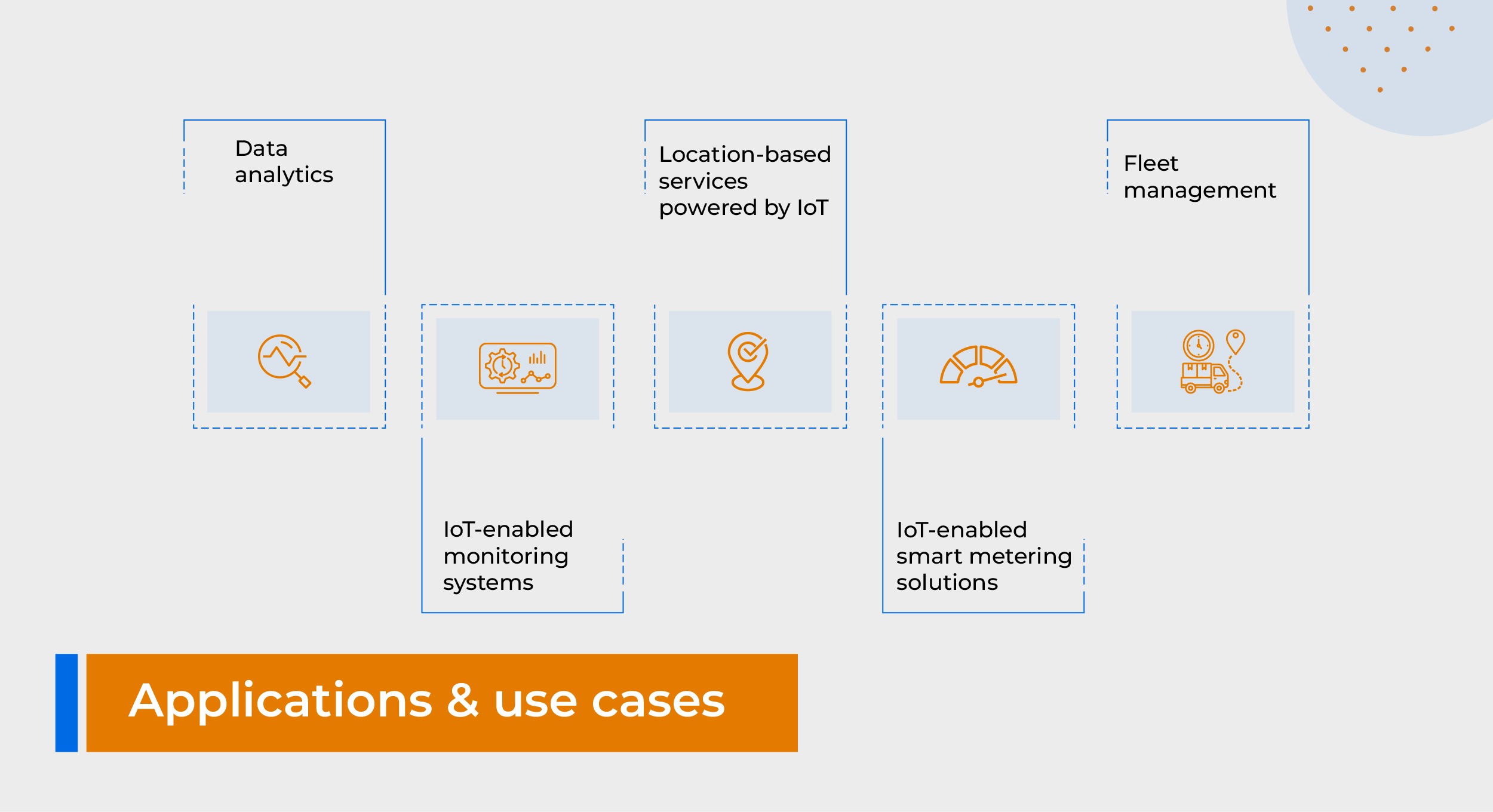
Benefits of IoT to Telcos
The integration of IoT technology within the telecom industry brings forth a myriad of advantages for MNOs, fostering a more secure, efficient, and profitable operational landscape. IoT bolsters security measures by facilitating remote monitoring, real-time alerts, and proactive maintenance protocols and with IoT-powered solutions, telecom facilities can be continuously monitored, enabling swift detection of anomalies, potential threats, and security breaches. This proactive approach not only fortifies the security posture of telecom infrastructure but also ensures uninterrupted operations and mitigates the risk of service disruptions.
Additionally, the advent of IoT generates vast volumes of real-time data that serve as a valuable asset for telecom operators. By harnessing this data through advanced analytics and decision-making processes, operators gain actionable insights into customer behavior, market trends, and network performance. This data-driven approach empowers telecoms to make informed decisions, optimize service offerings, and enhance overall operational efficiency. Furthermore, IoT-enabled solutions facilitate enhanced safety measures by enabling proactive monitoring and preventive maintenance at remote facilities. Through continuous monitoring of environmental conditions, equipment status, and security parameters, telcos can swiftly identify and address potential risks, minimizing downtime and ensuring the safety and integrity of critical infrastructure.
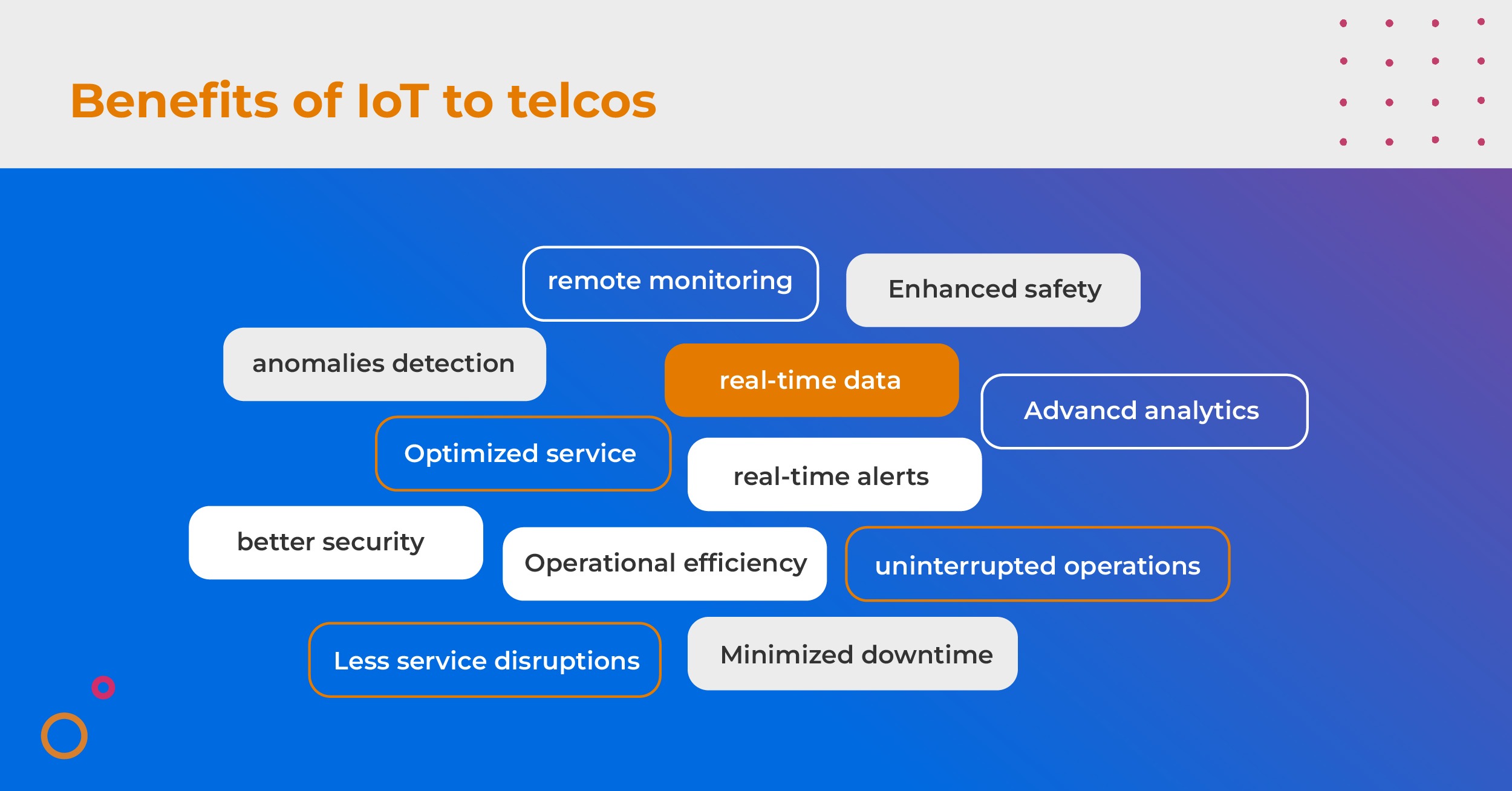
Final Thoughts
As IoT technologies continue to evolve, telecoms must embrace emerging trends, standards, and use cases to stay ahead of the curve. With the deployment of 5G networks, edge computing, and artificial intelligence, the capabilities of IoT are poised to expand further, unlocking new opportunities, driving innovation, and shaping the future of connectivity. By harnessing the power of IoT technologies, MNOs can optimize operations, enhance service delivery, and drive sustainable growth across diverse sectors.
